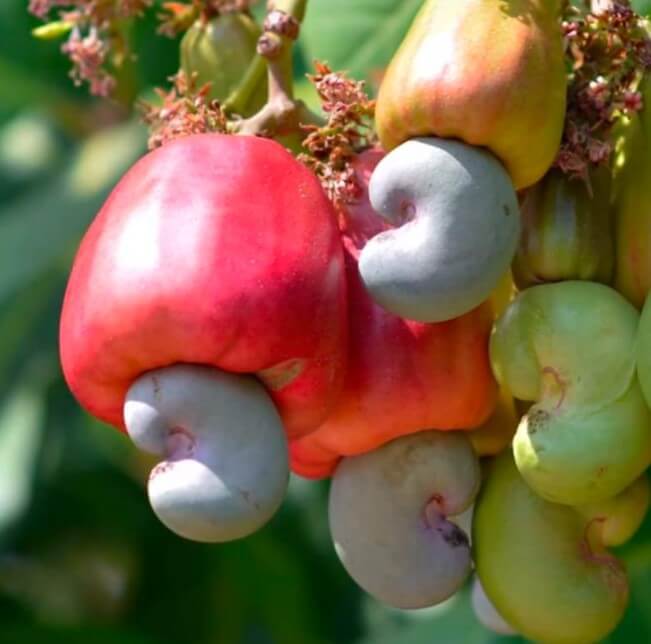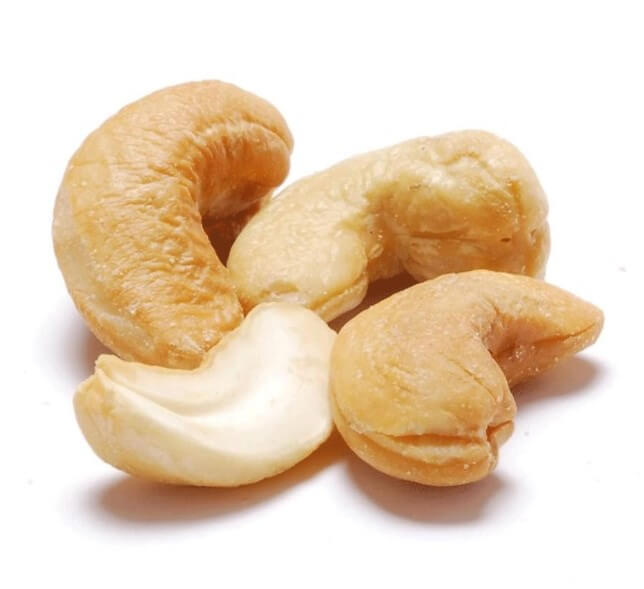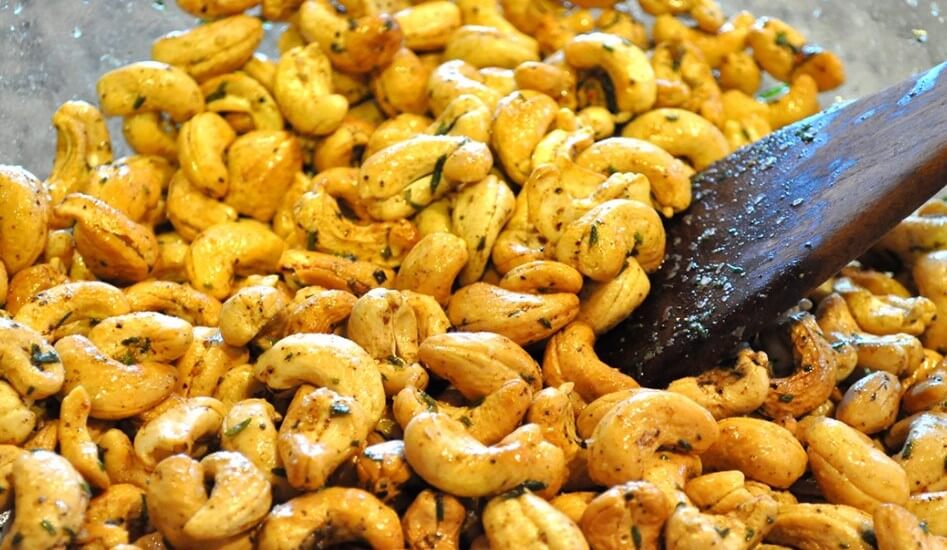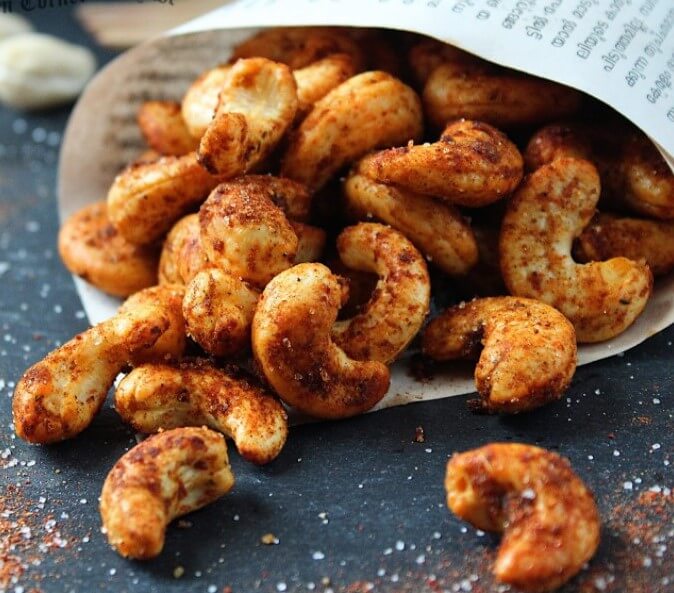Are Cashews Poisonous: Cashews are perfect allies to control cholesterol and strengthen our immune system but they hide an alarming secret; Eating them raw and in high doses can have fatal consequences.
The cashew is considered a dried fruit, but it is actually the seed of the tree . The germ is found inside a nut that is part of the fruit along with the pseudo fruit. The outer shell that protects it contains “urushiol” , a highly poisonous compound.
If you are a fruit lover and you are used to buying variety, surely it has ever caught your attention that, like most nuts you can buy them both raw, fried or roasted, and even choose if you want to take them home with or shelled, in the case of cashews, these options are limited to the point that you have never seen raw cashews or cashews in the shell for sale.
Let’s talk about the original of cashews:

The cashew is a fruit tree native to northern Brazil . It was in the 16th century when it was discovered by the Portuguese colonizers who, attracted by its nutritional properties, exported it to India, at which time it was introduced in Southeast Asia and, gradually, in some countries of the African continent. As a curious fact, it is worth highlighting the origin of its meaning. The name cashew tree was given to it by the French monk and naturalist André Thevet, whose shape reminded him of an inverted heart (“ ana ” means “upwards” and “ cardium ” means “heart”).
Currently, the world’s largest producers of cashew nuts are Brazil, India, Vietnam and West Africa, countries in which their humid tropical climate favors the development of these seeds. The northeast region of Brazil has a planted area of more than 800 thousand hectares, which is why it becomes a vital product for its economy, since the vast majority of producers are small farmers who cultivate land of less than 10 hectares.
Although cashews sound like Asian dishes to us, they are actually the fruit of Anacardium occidentale, a tree that comes from Brazil and was brought to Asia and India by Portuguese colonizers.
It is a really curious fruit, because apart from the “nut” that the seed contains -the cashew that we are used to seeing and consuming- and that you can see in the image above, it also has a pseudo fruit with a shape and size similar to those of a pear.
Nutritional properties and benefits

The magnificent composition of the cashew nut translates into a series of health benefits , which is why the World Health Organization (WHO) recommends its consumption. Per 100g cashews provide the following nutritional values:
- Kcal: 600
- Water: 4.4 g
- Fat: 42 g
- Proteins: 18 g
- Carbohydrates: 20 g (content higher than other nuts such as walnuts or almonds whose content is less than 5g)
- Fiber: 4 g
* A suitable portion would be about 25 g = 15 cashews.
In the first place, the monounsaturated and polyunsaturated fatty acids present in cashews help to reduce the levels of LDL (bad) cholesterol and triglycerides, so that people who consume them are more exempt from suffering cardiovascular diseases, such as heart attacks or cerebral infarcts, than those who do not consume them.
The nutritionist Carmen Palomo Domingo, graduated in Human Nutrition and Dietetics from the Complutense University of Madrid and an expert in obesity and eating disorders, recognizes that, despite their high fat content, “it is not necessary to eliminate them from diets to control weight, you only have to take care of the amount. For me, they are a fantastic ally since their fiber content, healthy fats and proteins make the feeling of satiety greater and avoid the consumption of other unhealthy, ultra-processed foods and with more calories “ .
Another of the properties has its origin in its richness in minerals, such as magnesium and copper ; the latter is essential in our health as it is essential for the regeneration of tissues (hair, nails or skin) and the proper functioning of the immune system. In addition, cashew nuts are rich in tryptophan, one of the essential amino acids that is a precursor of the neurotransmitters serotonin and melatonin and of vitamin B3 or niacin. These components are responsible for improving our mood and facilitating better rest.
“The secret to benefit from the properties of nuts is to include them in the framework of a healthy diet. Consumption can be daily, but moderate, about 25g a day and varying between the different types of nuts,” concludes the expert.
The risk of eating them raw

Surely you have never noticed, but while the market is full of nuts in their raw version, such as chestnuts, almonds or sunflower seeds, cashews are never open to this option. The reason? If they are raw, they can be highly toxic. This is due to a substance known as urushiol , a type of oil that resides in the leaves of the cashew tree , Anacardium occidentale , as well as the shell of the walnut and is also present in other plants, such as poison ivy .
Although experts call for caution, since eating raw cashews in large quantities and in a single sitting can cause death, the truth is that the most frequent symptoms are usually milder. We are talking about skin irritation, edema, inflammation, suppuration and, in the worst case, severe dermatitis, among others.
Also, do not let this information deprive you of the benefits of this food, since it is practically impossible for the cashews you buy in the supermarket to suffer from this problem, since most have passed a cooking and roasting process that completely eliminates urushiol of its composition.
Thus, although some points of sale offer “raw” cashew nuts, you should know that this is not true , since manufacturers are obliged to process them and subject them to high temperatures to safely remove the shell and eradicate the toxicity of the fruit that resides inside.
How to eat cashew nuts and famous recipes
Nuts are usually very helpful when it comes to accompanying the aperitif. For example, cashew nuts caramelised with chili and lime are the perfect pairing to accompany beer or vermouth . In addition, you can make use of these seeds well beyond snacking … Serve them in a salad, as a garnish in a cream or soup, as a snack between meals or as a starter accompanying different varieties of cheeses …
In Asia they take on great prominence, especially in the cuisine of Southeast Asian countries or India. It is added to all kinds of dishes with vegetables, meat … and even desserts. Cashews enhance the flavor of any dish and add a crunchy touch wherever they are added (soups, sauces, rice, condiments, salads, cakes). In addition, it is one of the most widely used thickeners in this area of the planet. Many cooks lightly sauté them to increase their flavor, add a handful of these nuts to a mortar, crush them and add them to a curry until they make a very thick and tasty sauce.
Likewise, in vegan cuisine, they are used when making creams or butters that replace those derived from milk fat. They are also used for the preparation of numerous sweet recipes such as a tasty coconut and cashew cake.
Be creative. In which of your recipes are they the main protagonists?
Are Cashews Poisonous???????

